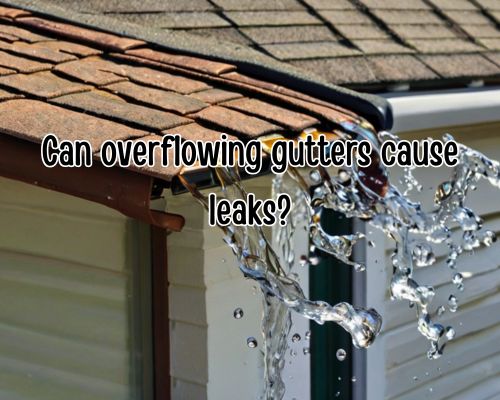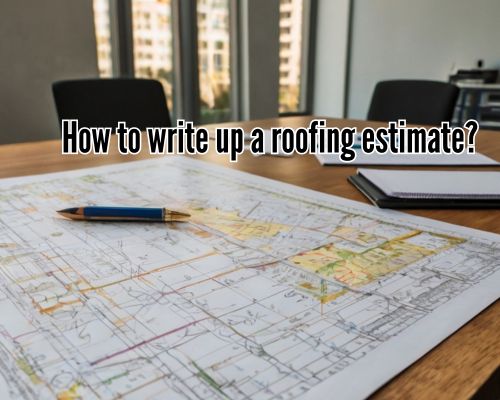In a city like Melbourne, Australia, where weather can swing from sunny to stormy in a heartbeat, home maintenance is more than just a seasonal concern—it’s a necessity. Among the common yet often overlooked issues is the role of overflowing gutters. Homeowners may ask: “Can overflowing gutters cause leaks?” The short answer is yes—absolutely. But understanding how and why this happens is essential for protecting your property, especially in Melbourne’s unpredictable climate.

In this article, we’ll break down how overflowing gutters contribute to leaks, the signs to watch for, and what Melbourne homeowners can do to prevent costly damage.
The Mechanics of Overflow: How Gutters Can Lead to Leaks
At their core, gutters and downpipes are designed to channel rainwater off the roof and away from the foundation. But when gutters overflow—typically due to blockages, poor maintenance, or incorrect installation—that water starts to go where it shouldn’t. Instead of flowing cleanly into the downspouts, it spills over the sides or backs of the guttering system.
Here’s how that can turn into a leak:
1. Water Seepage into Roof Eaves
Overflowing water can pool under the eaves or fascia boards, seeping into the roof structure. Over time, this creates rot, undermines timber framing, and can lead to interior ceiling leaks.
2. Wall and Foundation Damage
When excess water runs down the exterior walls, it can penetrate brickwork, weatherboards, or rendered surfaces. In older homes across Melbourne suburbs like Brunswick, Northcote, or Elsternwick, these materials may already be porous, making them vulnerable to internal wall leaks and rising damp.
3. Backflow Under Roof Sheeting
In metal roofs—common in Victorian-era homes throughout Melbourne—overflow can push water backward under the corrugated sheets. That moisture travels along rafters and sarking before eventually dripping into living spaces.
You may also see gutter services for your needs.
Why This Matters More in Melbourne
🌀 Unpredictable Rainfall Patterns
Melbourne is notorious for its four-seasons-in-a-day weather. Sudden downpours can dump large volumes of rain in minutes. If your guttering is partially blocked by autumn leaves, twig buildup, or even nesting debris, that stormwater has nowhere to go. Suburbs bordered by tree-lined streets—like Camberwell or Ivanhoe—are particularly at risk.
🏠 Heritage and Weatherboard Homes
Melbourne has a wealth of period homes, many of which still use older box gutters or outdated asbestos-lined systems. These are more prone to failure when water backs up. Even modern homes in new estates like Point Cook or Cranbourne can face issues if gutters aren’t adequately sized for stormwater loads.
Telltale Signs Your Gutters May Be Causing Leaks
You don’t need to be a roofing expert to spot the warning signs of gutter-related leaks. Here’s what to look out for:
- Water stains on interior ceilings or walls
- Peeling paint or bubbling plaster, especially near windows
- Dampness or mildew smell in ceiling cavities
- Overflowing water during rain, spilling over gutter lips
- Sagging gutters or visible rust spots
- Moss growth on brickwork near downpipes
If you’re noticing any of the above, it’s time for a closer inspection—especially after storms.
SEO Insight: Why This Question Matters
The question “Can overflowing gutters cause leaks?” is more than a homeowner concern—it’s a high-intent search query. Google users asking this are often seeing signs of moisture issues and are actively seeking both diagnosis and solutions. Including semantically relevant phrases like “roof leaks from gutters”, “Melbourne rainwater damage”, and “blocked downpipe leak” not only improves SEO but aligns with their needs.
Preventative Measures for Melbourne Homeowners
✅ 1. Schedule Regular Gutter Cleaning
In leafy suburbs like Kew, Surrey Hills, or Blackburn, gutters can clog in just a few weeks. Cleaning them at least twice a year, especially after autumn, is critical. You can DIY or hire a local gutter services in Melbourne for peace of mind.
✅ 2. Install Gutter Guards
Mesh gutter guards can help keep out leaves, small branches, and animal debris. This is a smart option for homes near parklands or bush corridors, like those in Doncaster or Templestowe.
✅ 3. Upgrade Downpipes and Drainage
Ensure your downpipes are not undersized. In many older Melbourne homes, 90mm downpipes are inadequate for modern rainfall volumes. Consider upgrading to 100mm or 125mm systems, and make sure water drains well away from the foundation with stormwater redirection systems.
✅ 4. Conduct Annual Roof Inspections
Partner with a licensed Melbourne roofing contractor for a yearly check. They can spot loose flashing, gaps in roofing material, and signs of rot—issues that are often connected to improper water management.
The Cost of Ignoring the Problem
What seems like a small leak today could balloon into a structural nightmare tomorrow. Water damage restoration in Melbourne homes can cost thousands of dollars, especially if it leads to:
- Mould remediation
- Plasterboard replacement
- Electrical hazards
- Structural timber replacement
Home insurance may not always cover damage caused by neglect or lack of maintenance. Insurers often view blocked gutters as preventable damage, meaning a claim might be rejected. It’s crucial to read the fine print of your home insurance policy.
When to Call a Professional
If you’re seeing signs of water damage or unsure about the condition of your guttering, it’s worth getting a gutter inspection or a leak detection assessment. Many Melbourne-based roofing companies offer free quotes or thermal imaging to detect unseen moisture issues.
Look for providers who are:
- Licensed by the Victorian Building Authority (VBA)
- Experienced with Melbourne’s unique housing stock
- Offering both gutter repair and roof plumbing services
Final Thoughts: Don’t Wait for the Drip
So, can overflowing gutters cause leaks? Without a doubt. And in Melbourne’s ever-changing weather, being proactive is not just smart—it’s essential. Whether you live in a heritage terrace in Fitzroy or a new build in Tarneit, your gutter system is your home’s frontline defense against water damage.
💡 A bit of maintenance today could save you from a major headache tomorrow. When in doubt, inspect, clean, and protect. Because once water finds a way in, the real cost isn’t just in repairs—it’s in peace of mind lost.
